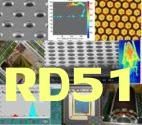Bari is the second main city of the southern mainland of Italy after Napoli. It is located on the lower Adriatic sea. The town was probably established by a tribe named Peucetii, but gained an important role as a commercial seaport during the Roman Empire. Later, following the troubled period of the Roman Empire fall, Bari was conquered and occupied several times. It is worth mentioning that for a period of about 20 years, around 860, after being the conquered by the Saracens, Bari became the Emirate of Bari under the emir Kalfun. In 1071, Bari was re-captured by the Normans and in 1087 the well known Basilica of San Nicola (Saint Nicholas) was built to accomodate the relics of Saint Nicholas which had been furtively taken from his grave in Myra, Lycia, by a group of fishermans and moved to Bari. After the "relocation" of the relics the Saint, who had been insofar referred as Saint Nicholas of Myra, slowly became Saint Nicholas of Bari. Under the Norman rule king Roger II decided to built a fortress to defend the city and in 1131 the construction of the first nucleus Swabian Castle of Bari was finally ultimated. Bari was sacked and almost erased in 1156 by William I of Sicily (William the Bad) and it was re-built around the ruins of the Swabian Castle by Frederick II, aka as "Stupor Mundi" and "Puer Apulia", who named Alduino Filangieri di Candida, aka The Lion of Bari, as Master of Bari (Maestro della Regia Corte e Giustiziere di Bari). This historical period was not noticeable and Bari eventually fell into a slow prolongued period of decadence under the dominantions of Angevins and Aragoneses with the noticeable exceptions of the period of Duchess Bona Sforza, who established a renaissance style court in the Swabian Castle of Bari, and of Venetian rule, which resulted in the restoration and expansion of the seaport.
It was only during the Napoleon period that Bari had a sort of renaissance, favoured by the great deal of public works which started on April 25th, 1813 when Joachim Murat initiated the construction of the so called Borgo Nuovo (new town) which is now known as the Murat quarter (centro murattiano). The population of Bari had a rapid growth and in few years reached 100,000 people.
The Basilica of Saint Nicholas is located in the Old Town (Barivecchia) which is in the northern part of the town, on a peninsula directly facing the sea. The old town has been recently restored and renowed and it is now the main nightlife district of Bari, it is full of little restaurants specialized in offering local food and, needless to say, wine. It is often overcrowded especially during the long summer period.
Last, but not least, Bari hosts on of the bigger Russian Orthodox Church in the west, again dedicated to Saint Nicholas, and built by the Russian Tzar Nicholas II at the beginning of the XX century to host the pilgrims coming from Russia to honor the Saint.
Weather in Bari is always quite mild. In october you can expect an average temperature ranging from 15° (minimum) and 23° (maximum). In october the average number of rainy days is 7.




